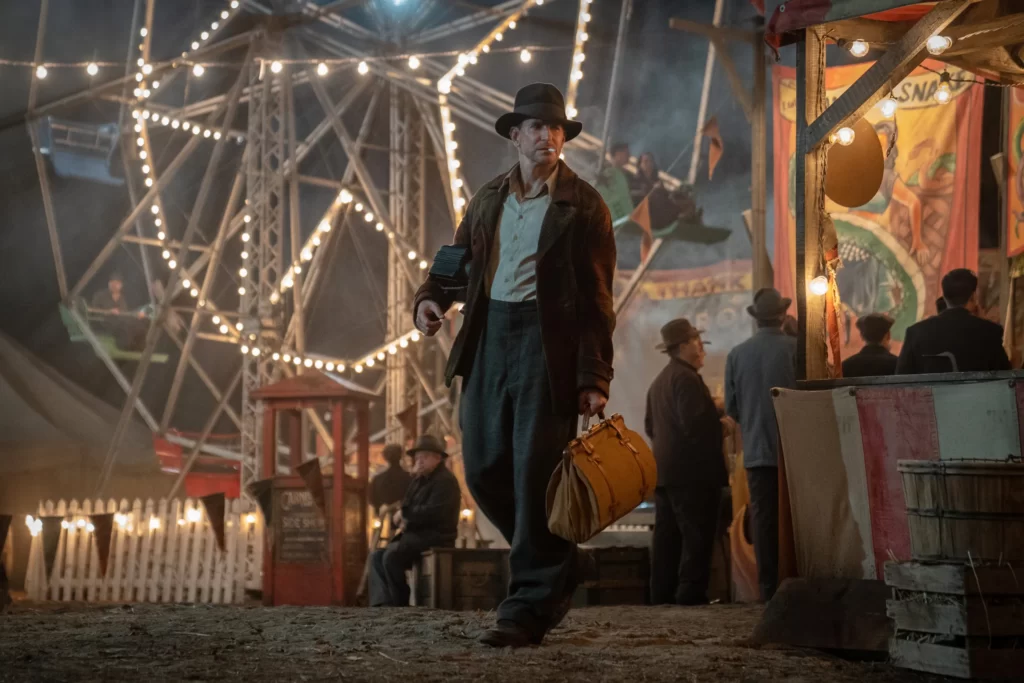First things first, I should address the misconception that Guillermo del Toro’s Nightmare Alley (2021) is not a remake of Edmund Goulding’s Nightmare Alley (1947). Both are adaptations of William Lindsay Gresham’s 1946 novel of the same name. Having not yet read the book, I can’t speak to which film is the better adaptation. I can, however, discuss the merits of each film as a film. Be warned that this is not an in-depth comparison, though I will be discussing both movies; rather, I will use this space to primarily talk about del Toro’s vision.
Comparing Guillermo del Toro’s and Edmund Goulding’s Nightmare Alley
The film centers on Stanton Carlisle, this time played by Bradley Cooper. The character is a bit of a womanizer in del Toro’s iteration, having three sexual partners over the course of the film. While the heightened sexuality of Stan’s character may cater to modern audiences, all the relationships feel severely underdeveloped, especially in comparison to Goulding’s Nightmare Alley (in which Stan has at least two partners). Cooper’s acting in non-intimate scenes, however, is great. The new adaptation is more of a filmic bildungsroman, or journey through a character’s development, than the old one, as we watch Stan from young adulthood at home to the circus to a life of high-status performance and, finally, back to the circus.
Standout Performances in del Toro’s Nightmare Alley Cast
Going along with the contemporary age of gritty reboots and remakes (see Disney’s 2019 remake of Dumbo, helmed by the once-visionary Tim Burton), the ending of del Toro’s Nightmare Alley shows that some people just can’t be redeemed and that there is no hope, which directly contrasts with Goulding’s version. Although Stan seems to care for Molly (Rooney Mara) at first, she quickly fades into the background. The supporting cast is amazing (Willem Dafoe, Toni Collette, Cate Blanchett, Ron Perlman, etc.), but Nightmare Alley is primarily about Stan and his descent into depravity, so it makes sense that the finale shows him alone, buffeted by the winds of life. It’s also worth mentioning that the supporting cast all play their roles incredibly well. I particularly enjoyed Paul Anderson’s performance of the geek at the beginning and Willem Dafoe’s representation of a ruthless carnie leader, though the latter’s screentime is far too brief for my taste. Nonetheless, I couldn’t find myself rooting for any characters. Goulding’s direction leads to at least some sympathy for the characters, especially for Zeena (played by Joan Blondell in 1947 and Toni Collette in 2021).
The Circular Plot of Nightmare Alley: Effective or Unnecessary?
Going back to the ending of 2021’s Nightmare Alley, the scene also serves as a bookend to the beginning of the film. We are finally shown the circumstances of the mysterious old man and fire from the opening scene. I usually like circular plots, in which the end leads us to the beginning, but I had nearly forgotten about the old man and the fire because the events are never addressed in dialogue or flashbacks. There is an interesting shot of Stan and fire about halfway through the movie, but that’s about it for callbacks. Was the bookending necessary? I don’t think so. Perhaps it was included to show that Stan was always a terrible person. Even if that’s the case, not much would be lost if the scenes ended on the cutting room floor.
Overall, Guillermo del Toro’s Nightmare Alley did precisely what an adaptation should do: it showed a different view of its source material. It is not my favorite del Toro movie, but it is a great adaptation and a great neo-noir. I’d say the highlight of this movie is the acting, even if I wished that the minor characters were developed just a bit more. The cinematography, while not groundbreaking, makes for a visually interesting film. Keep an eye on the final shot.
